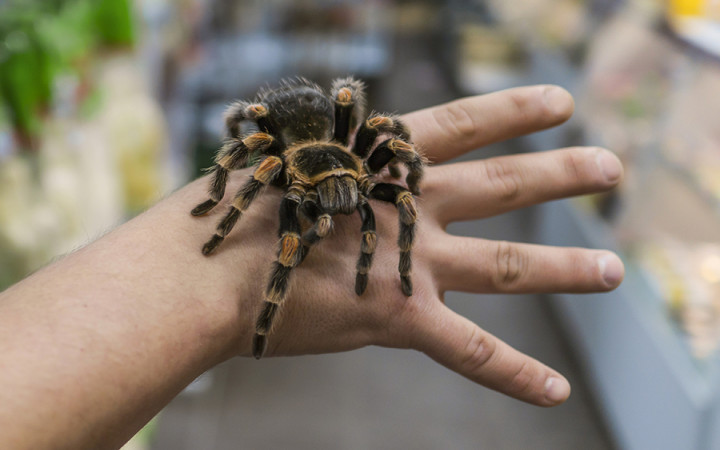Today’s Wonder of the Day was inspired by Holly. Holly Wonders, “How many different kinds of spiders are there?” Thanks for WONDERing with us, Holly!
Hey Wonder Friends! Did you hear about the spider that got a job at Google? Yeah, they heard she was a great web designer!
What better choice could there be to navigate the World Wide Web than an eight-legged spider? Seriously, though, could you imagine working with a spider?
For those of you with arachnophobia (fear of spiders), that might seem like a nightmare. When it comes to creatures we'd want to work with, creepy, crawly, leggy, scary spiders usually aren't high on the list.
There's one type of spider that's probably at the top of the "most feared" list for those with arachnophobia: the tarantula. Based upon movies and television shows, many people believe that tarantulas range in size from as small as a dog to as large as a baby hippopotamus.
Many people also believe they possess fangs dripping with venom deadly enough to kill an average adult. Fortunately, these impressions aren't accurate. Tarantulas do get a bad rap, but that's just to be expected when you're hairy and have eight legs.
The tarantula traces its history to the common wolf spider found in the city of Taranto in southern Italy. Residents of Taranto thought the wolf spider was killing people, but it's not dangerous. Historians believe it was actually the black widow spider that was responsible for deaths in the area.
Nevertheless, residents came up with a unique antidote to its venom: a vigorous dance they called the Tarantella. It is from this dance and town that the name tarantula was born.
When most people think of a tarantula, they think of the Mexican red-kneed tarantula, known scientifically as Brachypelma smithi. There are actually many varieties of spiders classified as tarantulas, though.
Depending upon how they're categorized, spider experts believe there are approximately 650-900 species of tarantulas. True tarantulas belong to the scientific family named Theraphosidae.
They can be found in warm areas on every continent except Antarctica, with the greatest concentration being found in South America. They often go by other names, such as bird spiders, monkey spiders, baboon spiders, or rain spiders.
As spiders go, they do tend to be big and hairy, but they're usually not as large as people imagine them to be. Most are quite small (less than a couple centimeters long). The exception is the world's largest spider (by mass): the Goliath birdeater (Theraphosa blondi), which can be as large as a dinner plate!
Tarantulas also don't hunt down humans like prey like you may have seen in a scary movie. They're not naturally aggressive and tend to avoid humans.
They do have fangs and venom, which they use to subdue prey, such as insects, other spiders, and small frogs, mice, birds, snakes, and lizards. Their venom isn't deadly to humans, though. For a human, a tarantula bite is similar to a bee sting.
From time to time, you may see what looks like a tarantula but is actually an empty shell. As young tarantulas experience growth spurts, they shed their hard exoskeleton in a process called molting. Most tarantulas molt several times during the first few years of their lives as they grow larger.











nicklaus
nicklaus
zhxiucbgfq ygubyhxnjsdknxm
nicklaus
Tarantula Freek?
jayden
peyton
AnthonyJeffcoSchoolsKid
kailey hill
Julian (Ms.Wright)
Dylan Ryan
corey
Adan (Ms. Wright's Class)
fortnite
Anthony
coty
Gavin
Happy
Savannnah
pushy
bmo
Jack
Grace
mandy
Wonder Friend
Michael Sanchez
Nathaniel
Dylan
David
aryan singh